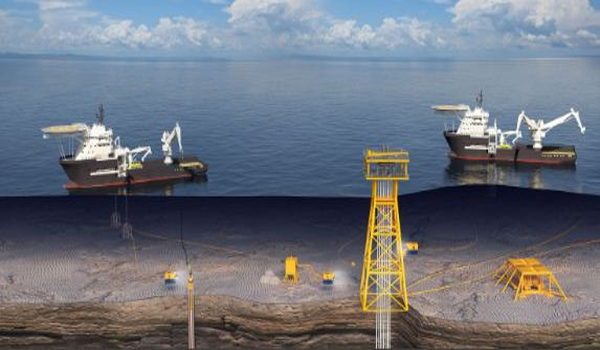
Kaieteur News
GEORGETOWN
EnergiesNet.com 04 14 2022
Environmentalists locally and abroad have over the years, placed much of their attention on the debilitating effects an unmitigated oil spill from any of ExxonMobil’s projects can have on Guyana’s fishing industry.
In all of its Environmental Impact Assessments (EIA) submitted to the relevant authorities, the American oil giant’s subsidiary, Esso Exploration and Production Guyana Limited (EEPGL) has admitted that an oil spill from its approved Liza Phase One, Liza Phase Two, Payara and Yellowtail Projects, has the potential to cause significant damage to the commercial fishing industry.
But even with no oil spill, fishermen have been complaining, especially in recent times, that their catch is dwindling at worrying rates. Dreading the destruction of the industry, they have since appealed to the government to conduct a study to understand how and to what extent, EEPGL’s oil production and development operations are affecting their main source of income.
Interestingly, one may not have to await the conclusion of government’s independent study for a glimpse of the effects fishermen are yearning to understand.
Deep within the EIA of the Payara Project are blatant admissions from EEPGL that this third oil development which will produce over 220,000 barrels of oil per day, can have an impact on the migratory pattern of the local fish stock. It also warned that toxic effects can also be unleashed on these aquatic vertebrates.
The oil company noted that its drilling operations for the project will have an impact by way of artificial lighting on drill ships and major installation vessels, installation of equipment for vessels including pile driving, permitted liquid waste discharge, and permitted drill cuttings and fluids discharge. The key effects on the fishing industry from this project are as follows: changes in the distribution of fish due to altered water quality, auditory impacts from vessel sound, auditory impacts from sound from vertical seismic profile surveys and pile driving and attraction to artificial light.
As for production operations, EEPGL said this could lead to changes in the distribution of fish due to altered water quality, auditory impacts from vessel sound, changes in distribution and habitat usage due to altered bottom habitats and the presence of project infrastructure, and loss of fish eggs and larvae due to entrainment of immature life stages.
EEPGL was also keen to note that the combined impact of increased temperature and chlorine concentrations will make the localized mixing zone inhospitable to some species. However, unless fish are physically confined or otherwise prevented from escaping unfavorable water quality conditions (e.g., in the case of fish eggs), fish are usually capable of detecting and avoiding harmful water quality conditions, thereby minimizing potential toxicological impacts.
Additionally, EEPGL said aquatic species may be indirectly impacted by the elevated temperature and residual chlorine in the offshore discharges made by the company. Kaieteur News understands for example that elevated temperatures may result in aquatic species avoiding regions close to the discharge while residual chlorine may interact with naturally occurring organic matter, resulting in chlorinated byproducts with the potential to result in indirect toxicity impacts on aquatic species.
EEPGL was keen to note that there are no regulatory limits for residual chlorine in marine discharges in Guyana.
kaieturnewsonlines.com 04 12 2022











